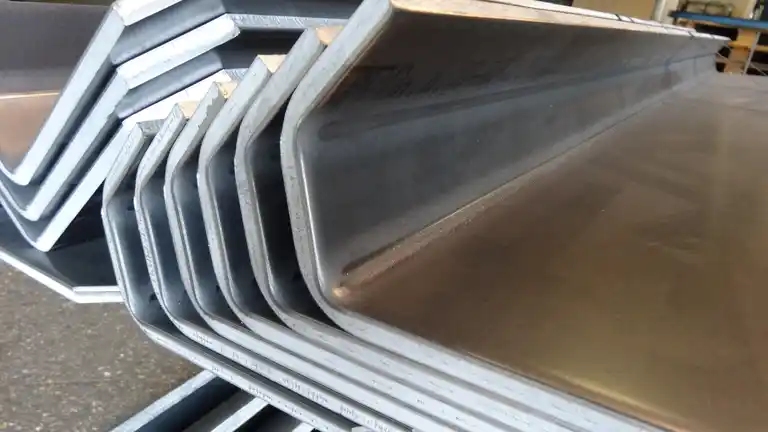High Strength Steel
High-strength steel is extremely versatile. It is used in bridge building, mining, crane construction, mechanical engineering, safety constructions and in the offshore industry. As high-strength steel is available from very thin sheet thicknesses, it is also used in the automotive industry.

As the high strength is available in fine-grained versions, this material can be very easily bent, milled, drilled and cut as well as welded. Especially the MC variants, such as S420MC and S700MC, are well suited for cold forming. High-strength steel is now easily available in a wide range of material thicknesses with a yield strength of up to 1,100 MPa. Higher tensile strengths, up to or even over 1,300 MPa, have more limitations on the available sheet thicknesses. The use of this type of extremely strong material is particularly common in the automotive industry, where crumple zones or cage structures are made from it.
High strength steel, also known as (U)HSLA -(Ultra) High Strength Low Alloy, belongs to the structural steels and meets the following requirements:
- maximum 0.25 % carbon content
- contains up to 5% alloying elements
- good formability
- good weldability
- the yield strength is above 355 MPa.
The stiffness is identical to conventional structural steel with the same shape (Youngs modulus). As a result, the bending will be greater at lower plate thickness and the same shape. This therefore requires adjustments in the profiling and design of structures and machines.
The advantages and disadvantages of high strength steel
The stiffness is identical to conventional structural steel with the same shape (Youngs modulus). As a result, the bending will be greater at lower plate thickness and the same shape. This requires adjustments in the profiling and design of structures and machines.
Advantages
- Thinner steel can be cut and processed better
- Less weight reduces the transport effort
- Lighter vehicles require less fuel
- Wearing parts have a longer service life and require fewer repairs
Disadvantages
- May have to be preheated before welding
- More force is needed for forming
- The fatigue strength is only slightly higher: fatigue fractures may occur
- Structural engineers require a lot of expertise to select the right steel
See also
BRINAR
BRINAR is a wear-resistant steel which is used in mechanically highly stressed areas.
Read moreConstruction Steel
Construction steel has excellent mechanical properties and can be processed very well.
Read moreCopper
Copper is used in many ways for industrial and construction purposes. It is also suitable as an alloying element.
Read more